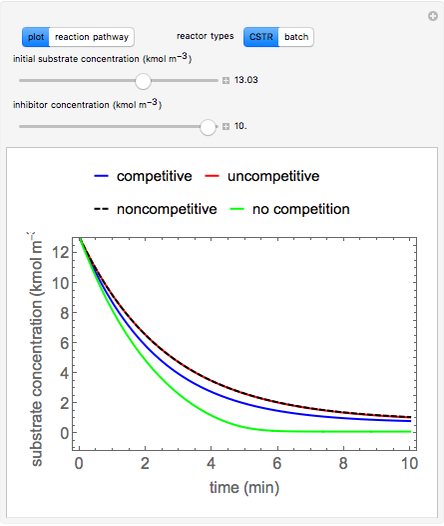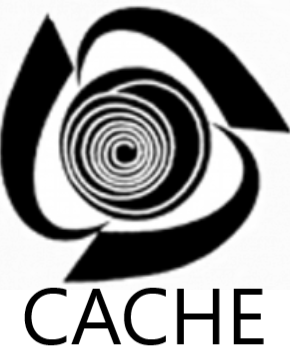Inhibition of Enzyme Reactions in CSTR and Batch Reactors


Inhibitors decrease the rates that enzymes bind to substrates and convert them to products. Three types of inhibition (competitive, uncompetitive, noncompetitive/mixed) and reaction with no inhibitor are compared for an enzyme reaction that obeys Michaelis-Menten kinetics. Substrate concentration is plotted versus time for a continuous stirred-tank reactor (CSTR) and for a batch reactor. Change the “inhibitor concentration”, which remains constant during reaction, with a slider. Change the “initial substrate concentration” for the batch reactor or the “feed substrate concentration” for the CSTR with a slider. Select “reaction pathway” to see the reaction steps, pathways, and a brief description of the type of inhibition. In competitive inhibition, the inhibitor attacks the enzyme to form an enzyme-inhibitor complex (E-I). In uncompetitive inhibition, the inhibitor attacks the enzyme-substrate complex (E-S). In noncompetitive inhibition, the inhibitor attacks the enzyme to form an enzyme-inhibitor complex (E-I) or it attacks the enzyme-substrate complex (E-S) to form an enzyme-substrate-inhibitor complex (E-S-I).
This simulation runs on desktop using the free Wolfram Player. Download the Wolfram Player here.
About:
This simulation was made at the University of Colorado Boulder, Department of Chemical and Biological Engineering. Author: Rachael L. Baumann
View the source code for this simulation


